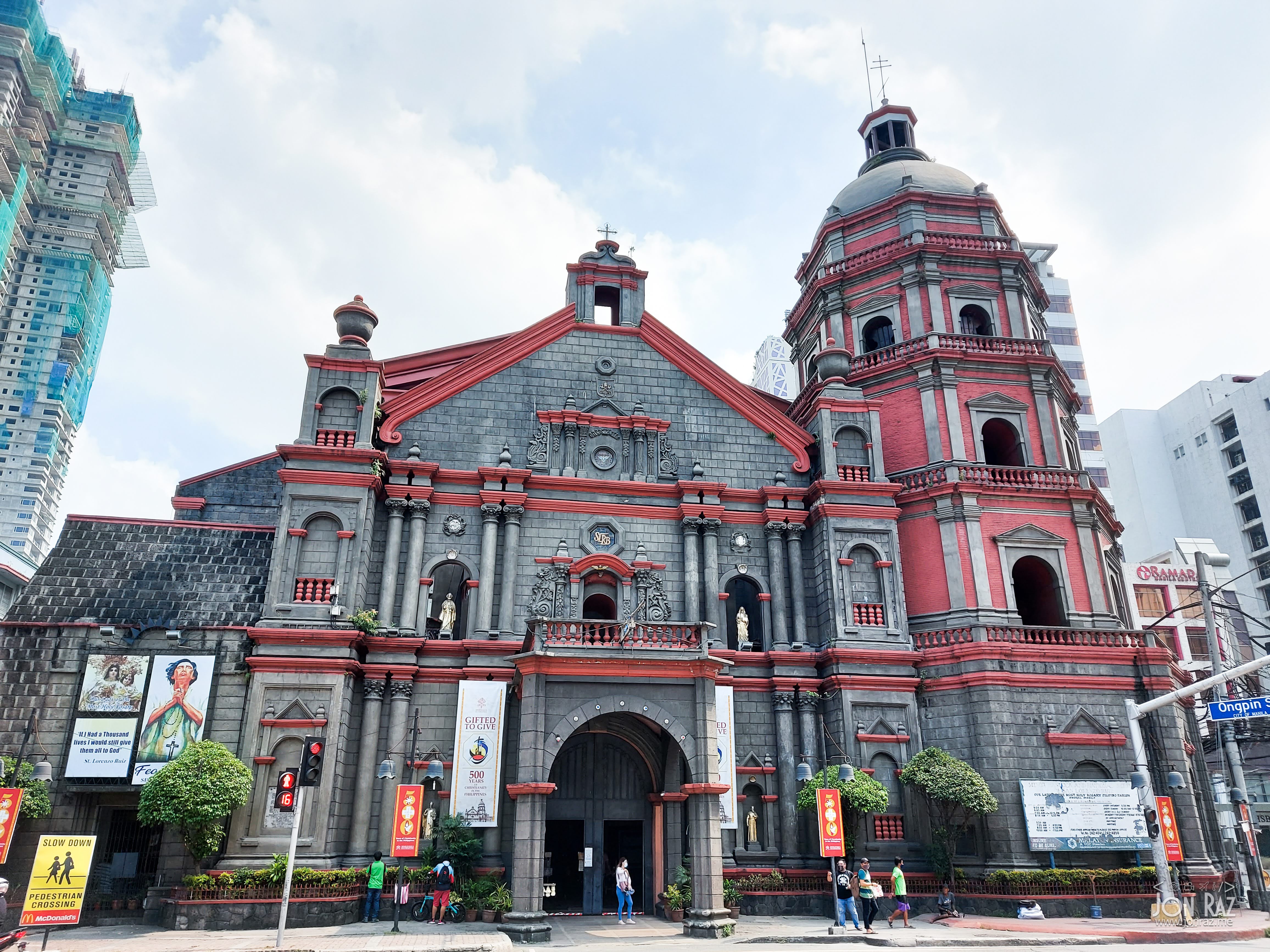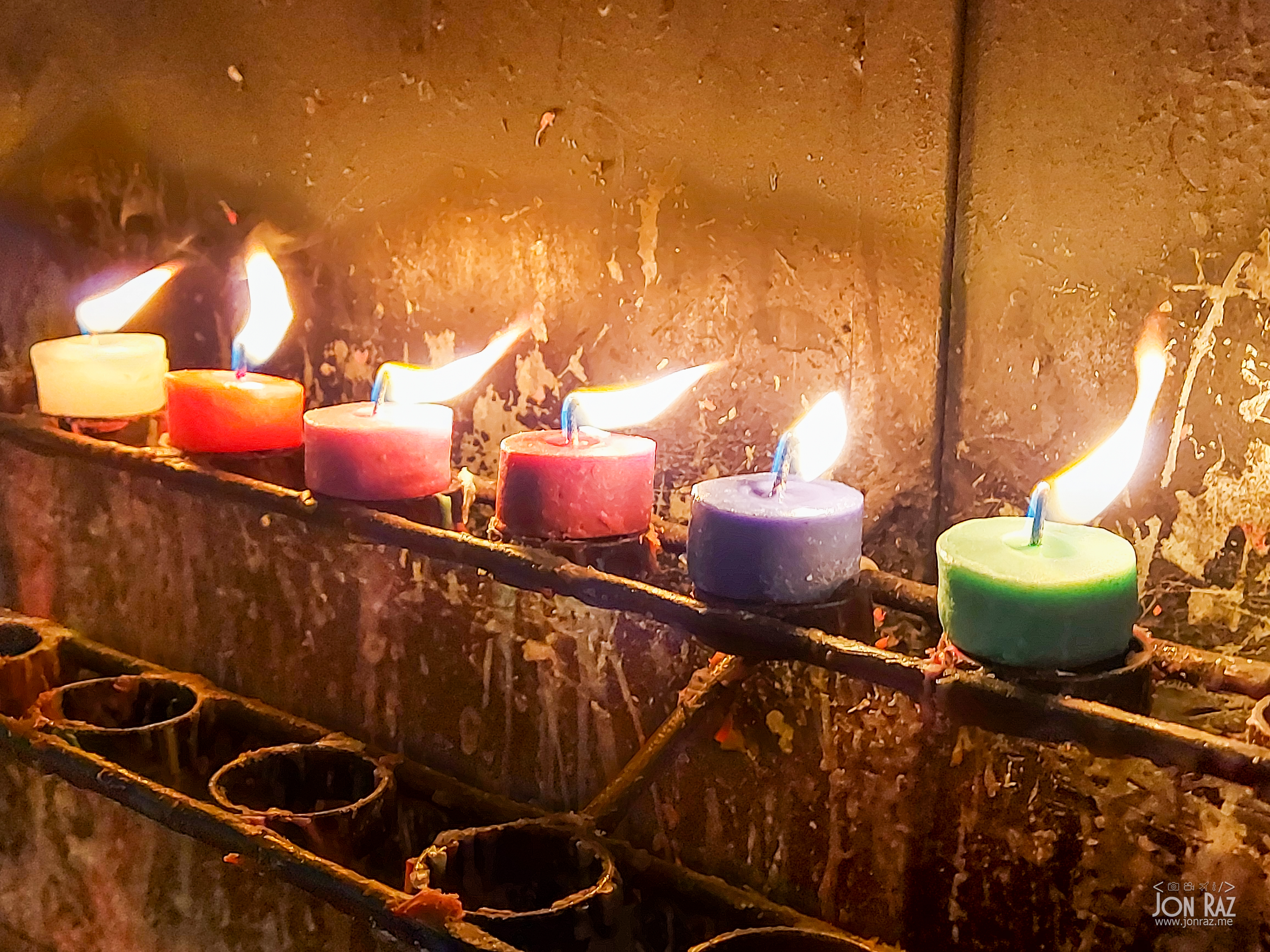Binondo Church
Minor Basilica and National Shrine of San Lorenzo Ruiz (Binondo Church)
Address: Plaza Lorenzo Ruiz Binondo, Binondo, Manila, 1006
History
The task of conversion of the Chinese in Manila was ordered by Bishop Domingo de Salazar but it failed because of lack of personnel and difficulty in learning in Mandarin, later, the task were handled by the Dominicans who arrived in 1587. Some of their first houses bulit exclusively for Chinese- the Hospital of San Gabriel (Intramuros in 1588 and in Binondo in 1598), and the Church in Baybay between Manila and Tondo in 1598, which was dedicated to Our Lady of Purification.
There are records of the existence of another church in 1598, which was devoted to the spiritual administration of the Chinese community as well as the native Filipinos. The church was destroyed in this 1603 Chinese revolt. Another one was built in 1614 and dedicated to the Our Lady of the Most Holy Rosary. The church was large and adequate for the priests in their ministries. It was also here that the first Filipino Saint, San Lorenzo Ruiz, served as a sacristan.
Dominican historian, Diego de Aduarte in his Historia de la Provincia de Sancto Rosario would describe the church as so:”From time to time, it has been increase in size and is now a most beautiful church, very capacious, very well-lightened, very pleasant, very strong and very attractive. It is built wholly by stone, being 38 brazas, and mors than eight in width, and eight and one half high. It has 50 large windows which add much to its beauty. Its size is now so great that it is that largest church in the village…”
The church was burned during the British invasion of 1762. Another one was quickly built following the occupation. Improvements were made in the 18th century but the edifice was again destroyed in the 1863 earthquake. It was rebuilt in the grandeur the remains of which we see today. Before the war,it was considered as the most beautiful church in the country. Its belltower was composed of five stories, octagonal in shape. At its top was a mirador (viewing window). The roof was destroyed during the 1863 earthquake.
The Dominican ministry of Binondo did not last for long. The religious ministry of the parish was changed several times in view of the secularization of the parish throughout the centuries. During the reign of Archbishop Basilio Sancho de Santa Justa, Binondo was secularized in 1768. But the Dominicans remains with the ministry for the Chinese. Later, the King also ordered the parish priest to assume responsibility for the spiritual administration of the latter. This created difficulties for the church because two independent parishes were created in the same place. The situation was somewhat remedied in 1791 where Governor General Feliz Berenquer y Marquina asked the Dominicans to return to their mission to the Chinese and to use as a church and convent the closed building of the Hospital de San Gabriel. The Binondo Ministry was returned to the Dominicans following petitions by the parishioners. This was a temporary arrangement until he Royal Decree of June 8, 1826 officially restored the parish to the Dominicans as well as their other ministries taken in 1768.
After the revolution of 1896 and with the arrival of the Americans in 1898, the Dominican left their ministries in the Philippines. A secular priest took over the parish and remained under its control for the next 25 years. The Chinese however, felt abandoned. It was only the Dominican who understood their language and customs. In 1923, they petitioned Archbishop Michael O’Doherty for a priest who minister to them in their language. The Archbishop acceded their request and petitioned the Pope in Rome on their behalf.
On December 7 1923, the Sacred Consistorial Commission transferred the ministry of the Chinese back to the Dominicans. But in view of the lack of the parish church, the Archbishop granted the use of the Church community until the time that a church could be built.
This kind of situation existed until it was put to an end until the last war. American bombing on September 22 1944 destroyed the structure. Everything included the archives of the parish were burned. Nothing was left behind except the stone walls of the church and the five-tiered octagonal belltower. After the war, Binondo had to make do with a roofless church for several years until it was rebuilt the the 1950’s.
In 1945, the parish priest for the Chinese, Fr. Antonio Garcia obtained a permission to build a church and convent in the premises of Binondo Church. Thus until today, there exists two churches in Binondo parish, one the old church now handled by the Filipino diocesan religious headed by Msgr. Josefino Ramirez, and the other, the Dominicans for the Chinese under Fr. Luis Sierra, OP.
Source: https://rcam.org/minorbasilicaofsanlorenzoruiz/about-us/















Comments